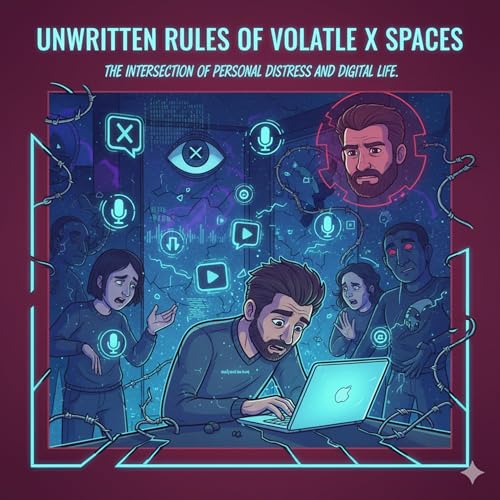The Digital Arena as a Social LaboratoryThis research report provides an in-depth analysis of a series of candid, long-form audio conversations to dissect the unwritten rules governing online community formation, conflict resolution, and reputation management. These raw, unfiltered interactions offer a rare opportunity to observe digital social dynamics in their natural state, free from the artifice of polished, pre-packaged content. Understanding these exchanges is of critical strategic importance, as they serve as a microcosm of the complex social systems emerging across the decentralized web. This analysis seeks to understand the central paradox of these spaces: how an environment of radical, unfiltered chaos can simultaneously be the bedrock for profound trust and the crucible for severe, identity-level conflict.The primary objective of this report is to synthesize disparate discussions into a coherent analysis of how trust is built, how conflicts emerge and are managed, and how digital reputation functions as a critical form of social capital. By deconstructing these interactions, we can identify the core mechanisms that allow for both profound community cohesion and severe internal friction within the same digital environment.The analysis that follows will examine the foundational architecture of community trust, the fracture points where conflicts arise, the role of reputation as a form of currency, and the systemic platform failures that necessitate user-driven governance, culminating in a final synthesis of these findings.2.0 The Architecture of Community: Trust-Building in a Chaotic EnvironmentBefore the dynamics of conflict or reputation can be properly analyzed, it is essential to understand the foundational mechanisms of community cohesion. In an environment characterized by its chaotic and unpredictable nature, specific social protocols must be established—whether explicitly or implicitly—to enable a stable community to form and function. This section examines the core pillars that support group cohesion, transforming a collection of disparate individuals into a functioning, albeit tumultuous, social unit.Radical Vulnerability and Personal StorytellingThe primary trust-building mechanism observed is a form of radical vulnerability, where participants openly share personal struggles. This ranges from minor daily frustrations, such as a credit card not working, to profound discussions about psychological health and past traumas. This dynamic is operationally standardized by the host, Alberto Daniel Hill, whose psychological profile notes his "radical transparency" about his own flaws and wrongful imprisonment. His authenticity is further demonstrated through startling self-deprecation about his own technical mistakes, such as admitting that while testing a Remote Access Trojan (RAT), his "information from my Google chrome... ended up something on a text file on the web." This willingness to expose professional missteps in a cybersecurity-focused community creates a permissive environment where others feel safe to reciprocate, establishing a deep relational credibility that is the bedrock of the community.Collaborative CreationCommunity bonds are significantly strengthened through acts of collaborative creation, which transform passive listeners into active co-creators.
https://x.com/ADanielHill
https://cybermidnight.club/research-report-an-analysis-of-reputation-conflict-and-community-in-unfiltered-digital-spaces/
 Nov 20 20256 min
Nov 20 20256 min 27 min
27 min 31 min
31 min 30 min
30 min 9 min
9 min Nov 20 202527 min
Nov 20 202527 min Nov 20 20251 h et 27 min
Nov 20 20251 h et 27 min 31 min
31 min
